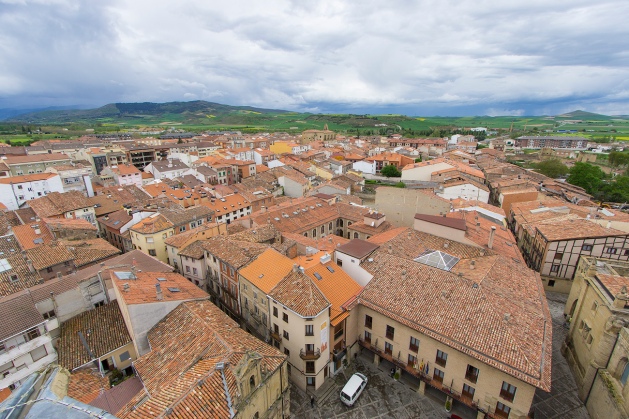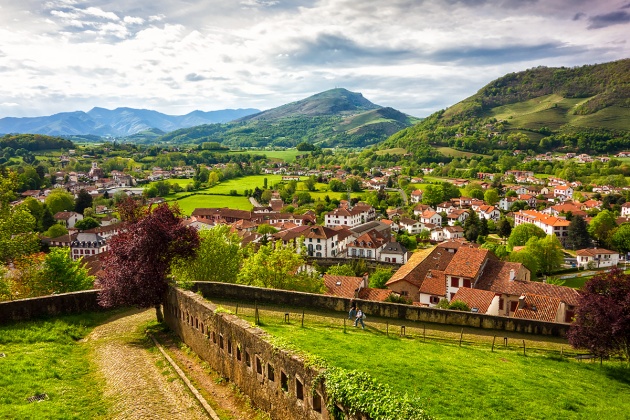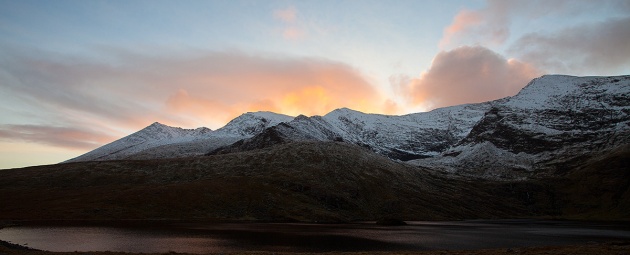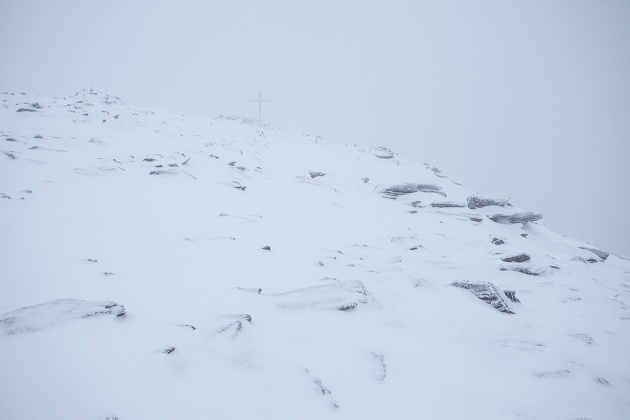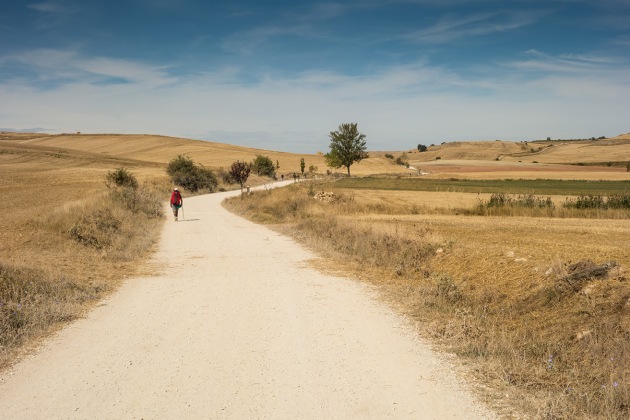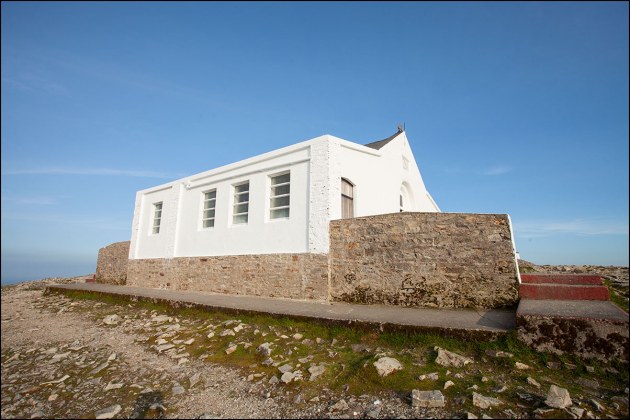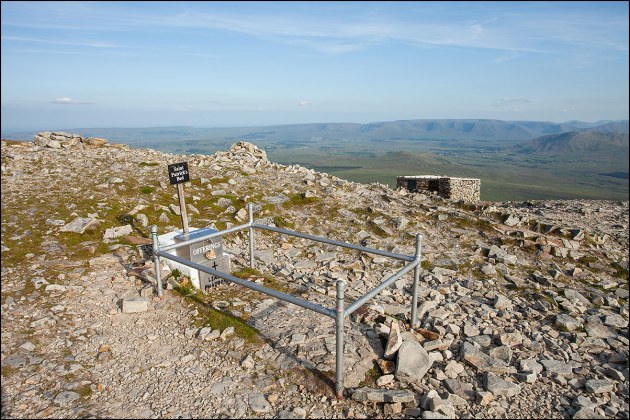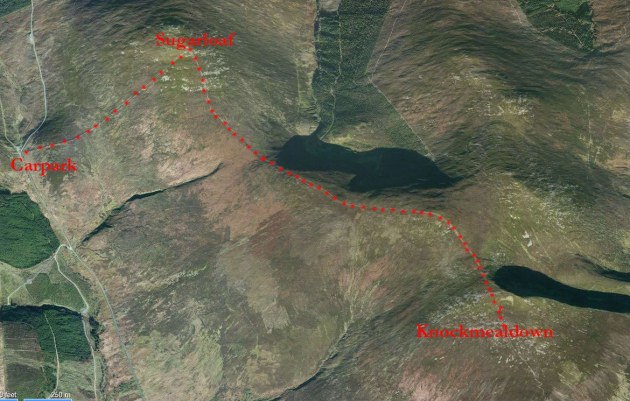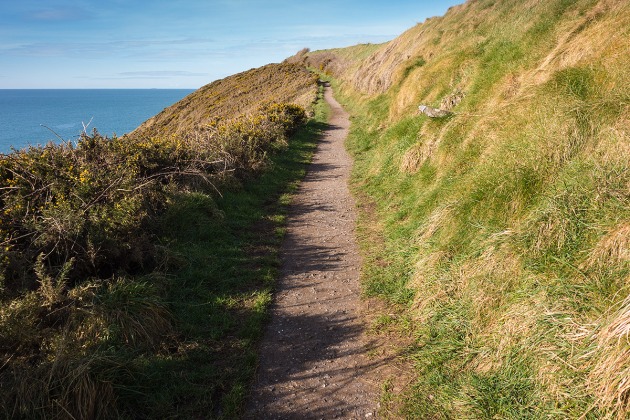I did my first section of the Camino Francés in September 2013 – from Sarria to Santiago. Like so many others who have dipped their toes into the Camino, the bug bit and the following year I walked from Burgos to León. This was followed in May 2015 – St Jean Pied de Port to Logroño – and in May 2016 I did the Logroño to Burgos leg. (I have written blogposts on them all – search “camino” if interested.) All that remained was the section from León to Sarria and I walked that over eight days this May. All done! Not as pure a Camino experience, no doubt, as doing it in one go over 33 or so days but I enjoyed my annual trips as well as the planning and the preparation and the always pleasant re-acquaintance with the wonderful country of Spain.

Statue of a weary pilgrim in León

Looking back at the Camino between León and Villar de Mazarife. My advice is not to stay at Villar de Mazarife – it’s a small town devoid of charm or interest. Go on to Villavante – or Hospital de Órbigo – instead.
My first day out of León was not auspicious – it was bitterly and unseasonably cold. I hoped this would not continue by the time I reached the Galician mountains in a few days as I did not have suitable warm clothing in my backpack. Thankfully, the weather improved dramatically the following day and, apart from an hour’s light rain outside Ponferrada, it remained calm, dry and warm for the rest of the time. Other than walking through a storm when traversing the Pyrennees on the St Jean to Logroño section I have been very lucky with the weather. People have spent a week and more walking in constant rain and it is an ever present possibility in Galicia given the province’s proximity to the Atlantic which, as we know in Ireland, can result in very variable weather.

Between Villar de Mazarife and Villavante. The long straight stretches are typical of the Meseta, the flat upland of Spain, and continue as far as Hospital del Orbigo when the landscape becomes more varied.

The bridge at Hospital De Órbigo. The original was destroyed by the town’s inhabitants in the 19th century to slow the advance of Napoleon’s army into Spain. It was restored in more recent times.

Part of the gentle hill country beyond Hospital de Órbigo.

Self and “friend” between Hospital de Órbigo and Astorga.

One is rarely out of sight of other walkers on the Camino.

The Cruceiro de Santo Toribio near Astorga.
I stayed in albergues – inexpensive dormitory bunk-bed accommodation – twice but in private rooms (hostals – similar to our B&Bs – and hotels) otherwise. I don’t like albergues for the simple reason that I am a very light sleeper and if there is a snorer in the room I find it difficult if not impossible to sleep. I bring ear-plugs but they are no match for a loud snorer and on each occasion this year I was unfortunate to be in a room with one. The first night I snatched some fitful sleep but on the second night – in O Cebreiro, after a very long, hard walk/climb – I got none at all as the snorer was as loud as a tractor. That municipal albergue cost me only €6 but it was a bad deal – I would gladly have paid ten times as much for a comfortable hotel room and a good night’s rest. The average cost of the private accommodation was €45 per night. Good value, in my view if you are a light sleeper. Otherwise, you can’t beat the value that albergues provide – private ones charge about €10 per night and municipal ones €5 or €6. Just be prepared to put up with noisy neighbours and be sure to pack good ear-plugs. An Australian woman told me she spent A$50 on a special industrial grade set and they were the only ones she found effective.

A colourful rest stop west of Astorga.

A stork in its nest atop a church steeple, a common sight.
The landscape varied from the flat Meseta upland as far as Astorga to the Galician highlands and valleys from thence to Sarria. Like any Camino section, parts of it were monotonous – especially where road walking was concerned (as in the 8 kilometre section through the industrial outskirts of Leon) – but it was mostly through beautiful verdant countryside accompanied by the sounds of birdsong (especially cuckoos – there was an abundance of cuckoos!).

The ancient village of Foncebadón. It thrived as a stop-off for pilgrims in the Middle Ages but by the 1990s there were only two people, a mother and son, living among the ruins. Slowly, there are signs of a revival but most of the buildings are still shattered and derelict.

The Cruz de Ferro between Foncebadón and Manjarin. It is traditional to bring a stone from one’s place of origin and place it on the mound.

Items in memory of loved ones at the Cruz de Ferro.
The highest point of the journey – and the highest point of the entire Camino Francés – was between Rabanal and Molinaseca at an altitude of 1,505 metres (the Col de Lepoeder on the Pyrennees is 1,300 metres). The climb up to O Cebreiro (1,300 metres) was the toughest day of the lot but it more than made up for the effort with the magnificent views of the surrounding countryside.

The highest part of the entire Camino Francés.

The descent to Molinaseca requires great care. I’m glad I didn’t have to negotiate it in wet eather.

The view from my bedroom window in Molinaseca. The bridge over the River Meruelo dates from Roman times.

Approaching Villafranco del Bierzo. Some stretches of the Camino are on public roads but they are generally not very busy as the motorways have taken most of the traffic.
I had been looking forward to O Cebreiro for more than the views. Here is buried a man without whom we probably wouldn’t have the Camino as we know it today and I was anxious to pay my respects at his grave in the little village church. Elías Valiña Sampedro, originally from Sarria, was the Parish Priest of O Cebreiro. He had an abiding interest in the history of the Camino and in 1965 he did his doctoral thesis on the history of the pilgrimage in the University of Salamanca. When the authorities in post-Franco Spain decided to promote the route for historical/cultural reasons Elías Valiña was at the forefront of the campaign. It was he who came up with the idea of the iconic yellow directional arrows which every walker depends upon. In the late 70s he loaded up his battered old Citroen with cans of yellow paint and set about painting arrows to mark the way. He was once stopped near the French border by two suspicious Guardia Civil and asked what he was doing; he answered that he was preparing for a French invasion! Alas, he died in 1989 at the age of 60, too soon to see the enormous increase in pilgrimage numbers in subsequent years. In 1989, 5,760 people received their Compostela (a certificate of completion) in Santiago; in 2016, it was 277, 915. He was a great man and all of us who have walked any part of the Camino owe him a huge debt of gratitude.
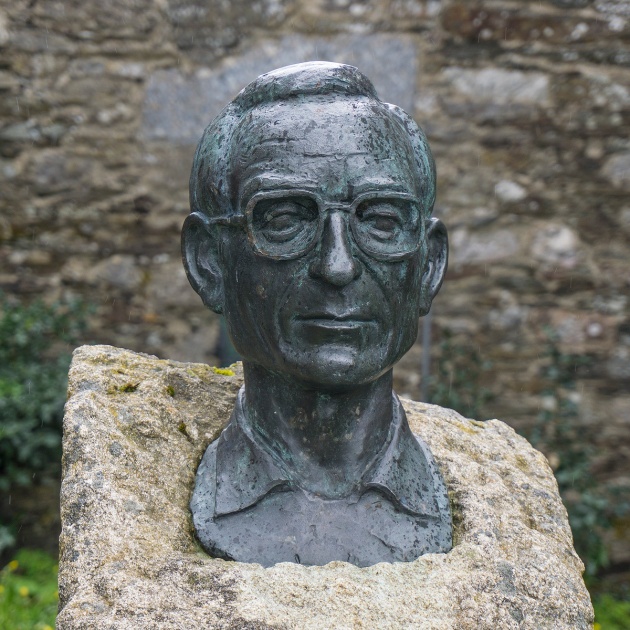
The bust of Elías Valiña at the church of O Cebreiro.
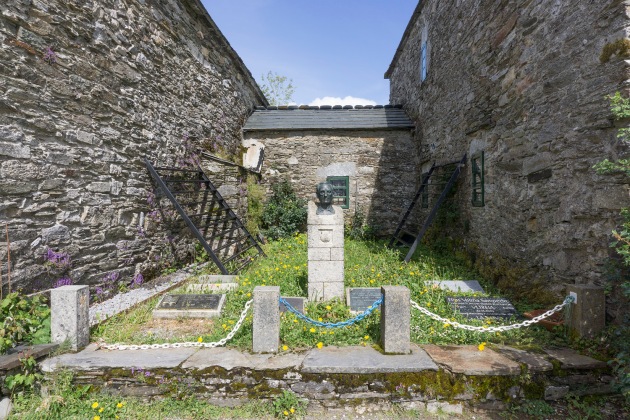
The bust surrunded by various commemorative plaques.

His grave in the church. It reads (my rough translation of the Latin): “Dr Elías Valiña Sampedro, Parish Priest of this place and famous restorer of the Way of St James and friend and brother to all pilgrims”.

One of the many plaques commemorating him. “Thanks and Peace to Don Elías Valiña who preceded us all in the love of the Camino”.

The yellow arrow, symbol and indispensable navigational aid of the Camino, brainchild of Elías Valiña.
There is a bust of him on a plinth outside the church but it seems few people pay it any attention. I sat on the wall opposite it for 30 minutes and in that time not a single person stopped to examine it. Anyone who did give it a passing glance probably thought it was a memorial to a local politician or something. Nor is this lack of awareness of the man unusual in my experience – I have spoken to Camino veterans who have never heard of him. Which is a pity given the importance of his research and scholarship to the revival of the Camino in modern times and the fact that his genius idea, the ubiquitous yellow arrow, is not only a symbol of the pilgrimage but an essential aid for everyone on the trek. Anyhow, visiting his final resting place was something I had long looked forward to and was the highlight of my 2017 Camino.

The view from O Cebreiro looking back towards the province of Castilla Y León.
As I mentioned, I got no sleep that night in O Cebreiro and I was out the door and on my way the next morning at 5:45. It was still dark – sunrise wasn’t until 7:16 – and I had to use my head-torch to find my way for the fist 30 minutes or so. I had 22 kilometres to go to my next destination, Triacastela, and I wasn’t sure if tiredness would prevent me from walking all the way. My plan B was to call a taxi if necessary. In the event, I got there without any problems and the fact that the day was one of glorious sunshine and the countryside was so picturesque buoyed my spirits and helped my forward momentum. I need hardly add that I did not stay in an albergue that night in Triacastela nor on any night thereafter. And never again, I hope!

A statue of a pilgrim at the Alto do San Roque (1,270 metres) between O Cebreiro and Triacastela.

En route to Triacastela.

Verdant Galician countryside.
The walk from Triacastela to Sarria via Samos was mostly though beautiful woodland along the banks of the River Oribio. This was the Camino in idyllic pastoral mode. Approaching Samos I heard the sound of a church bell and then, through a gap in the trees, there was the famous Benedictine monastery below me. I stopped off there for a guided tour and afterwards in a nearby café, had lunch with Brendan from Cork and Jim from California whom I kept meeting along the way.

The Benedictine Monastery at Samos.

The Monastery.

Between Samos and Sarria.

Journey’s end – Sarria.
And then it was on to Sarria, my final destination, and the town from which I did my first Camino. I stayed in the same place as I did back then, conveniently located on the Camino just on the entrance to the town.
I had closed the loop.
Which of the five sections – St Jean Pied de Port to Logroño; Logroño to Burgos; Burgos to León; León to Sarria; Sarria to Santiago – would I do again?
Each has its attractions but the one I’d go back to, I think, is Burgos to León. That is the section that a lot of people avoid because it is across the Meseta and is regarded as being too flat and monotonous. I loved it. I loved its wide open expanses and its big skies. I loved setting forth very early a couple of mornings and walking by the light of the moon. Standing alone in the vastness of the Meseta, in a place where millions of pilgrims had trod before me, and staring up at the heavens was a numinous experience that I shall long remember.

The road goes ever on … across the Meseta.
Why do it at all?
Why indeed. A thousand years ago and for hundreds of years afterwards people did it for religious reasons, to gain an Indulgence in order to minimise their time in Purgatory. They set forth from all over Europe and spent months – sometimes years – walking all the way to Santiago and back again. We may smile at their simple credulity but the pilgrimage was, in my view, one of the great civilising enterprises of medieval Europe. People from across the continent would have met each other en route and exchanged knowledge with one another. When they returned to their towns and villages they would have seeded their communities with new techniques and insights.
And consider how brave it was back then for people to undertake such a hazardous journey- people who, for the most part, would never have previously traveled more than 10 miles or so of their homesteads. They set out into unknown territory and all its attendant hazards – bandits, wild animals, dangerous terrain. All in the service of a compelling religious imperative, one that even the most devout modern believer would find it difficult to comprehend.
I don’t think too many people nowadays do it for overtly traditional religious reasons (and certainly not me) but it is impossible for even the most secular of us not to contemplate the motivations of those who went before us and to imagine what difficulties – and joys! – they experienced. There is a awareness of being part of an ancient tradition and one that may well last for another thousand years.
Why do it? It’s a retreat, of sorts. A retreat in the Christian tradition is time spent away from normal, everyday life for the purpose of reconnecting with God. Define God, if you like, as one’s Higher Self, or The Cosmos, or whichever Post Christian or New Age notion that you find fitting. The time away from normal life is a powerful incentive. You leave your family and friends and disappear into the fastness of Northern Spain for a time and forget (as much as one can in this age of connectivity) about the world of everyday routines and concerns. A County Longford woman I met had her phone with her but carried it just in case her family needed to contact her urgently. She did not connect to the internet and other than hearing other walkers talk about news items she was blissfully and deliberately unaware of what was happening in “the real world”.
It is a pilgrimage, of course, and in all religious traditions a pilgrimage consists of a journey to a holy place for the purpose of gaining spiritual knowledge and renewal. The physical journey is a metaphor for the human one and like every human life is beset with disappointments, sacrifices, torments (snorers! blisters!) and the like as well as bountiful joys.
The medieval pilgrims believed that the bones of St James the Apostle lay in the sarcophagus in Santiago; there is no modern historian who gives that legend any credence – it was devastatingly demolished by the French historian (and Roman Catholic cleric) Louis Duschesne in his 1900 paper “Saint Jacques en Galice” (St James in Galicia). There is in fact a better case to be made for the bones to be those of Priscillian, a 4th century bishop of Ávila who was put to death for heresy.

Louis Duschesne – he brought modern historical methods to bear on the Saint James in Galicia legend. He was a Monsignor of the Catholic Church.

The tomb in the Cathedral of Santiago purportedly containing the bones of Saint James. It is highly improbable that it does.
One can simply regard it as a good physical and mental work-out in pleasant countryside and with the opportunity to meet agreeable and interesting people. It’s no walk in the park though – you need to be fit and willing to undertake physically and mentally challenging walks day after day. It will be the hardest walking that most people will ever do. Day three is often the day of reckoning for the unprepared – exhaustion, blisters, tendonitis, plantar fasciitis and other ailments can manifest themselves by then and can result in the end of the Camino for the unfortunate sufferers. Forget about any romantic notions of having epiphanies around every corner or life changing encounters in albergues: think more of grindingly long trudges in weather that can vary from days of torrential rain to oven-like temperatures in high summer followed by spartan accommodation and basic food. There were times when I looked up at the jets heading south to the Costas and envied those aboard who would be sipping Margaritas by the pool in a couple of hours. And yet despite the hardships, the Camino casts a seductive spell. Walking it has been one of the best things I have done in my life.
Some Practical Advice
Blisters – How I Avoid Them
There are numerous suggestions for avoiding blisters. This is mine. Make sure you prepare for the Camino several months in advance by regular walking. Get your feet used to pounding the pavement.
Wear a pair of 1000 Mile (trademark) walking socks – they have a dual layer construction which, they claim, guarantees against blisters.
Have a right sock and a left sock and – advice given to me by a Camino veteran – wear the same socks on the trail for three to four days at a time before washing them.

Use Gehwol foot balm before and after each day’s walk. Some people use Vaseline – Gehwol (available only from Amazon) is far better.
Travel to León
I flew from Dublin to Madrid with Aer Lingus and got the 14:40 Ave train (300 kph!) to León. When you arrive in Madrid Terminal 2 get the free airport bus to Terminal 4. From there get the train (not the Metro) to Chamartín train station. It costs €2.60 at the automatic ticket machine. It’s best to book the Madrid to León train online at Renfe.es. The two-hour trip cost me just €16.55.
Sarria to Santiago de Compostela.
(I flew back to Dublin from Santiago.)
There is a regular bus service from Sarria to Lugo. It takes about 30 minutes. It’s not possible to book it online. Check out Monbus.es for the schedule. The Lugo to Santiago coach leaves at 10:45 and takes the motorway via A Coruña. It arrives in Santiago around 1:15 pm. Book it online at Alsa.es. It cost me €9.00.














